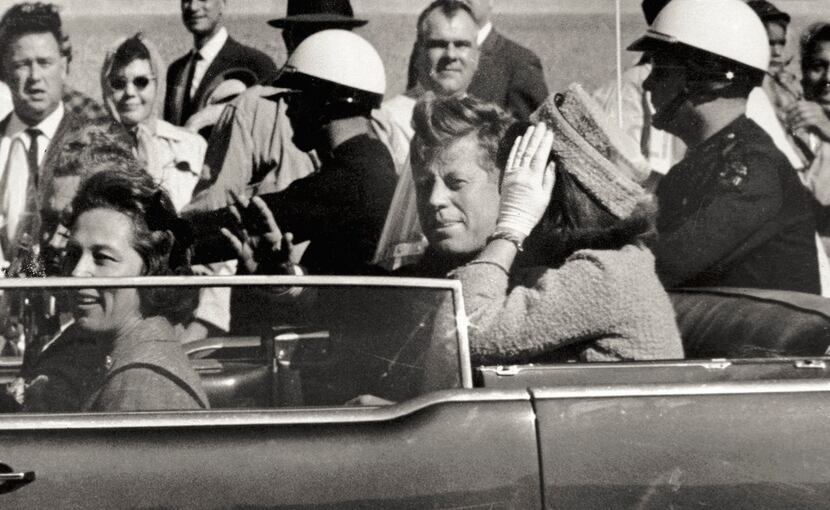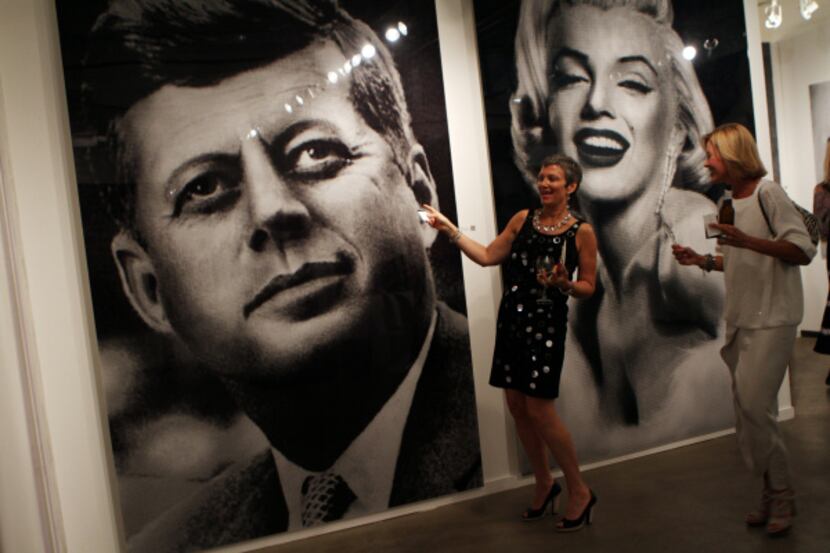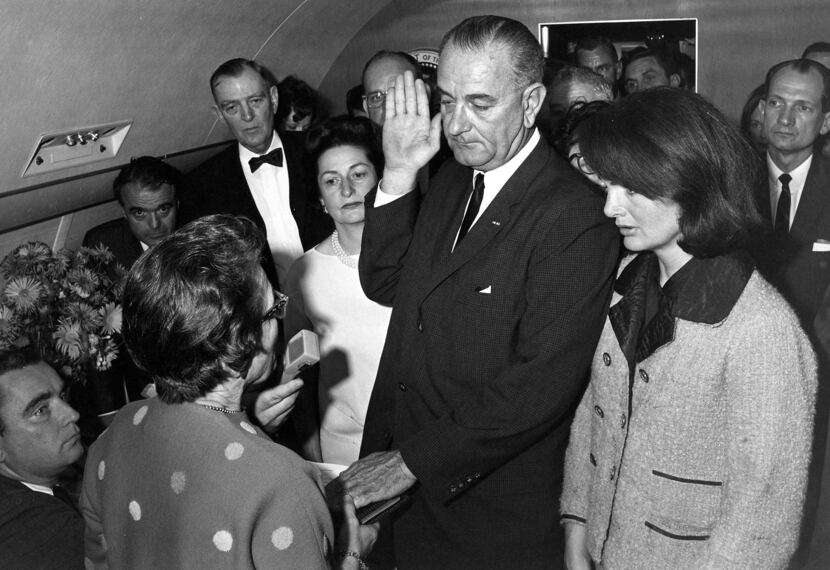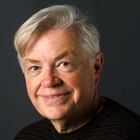Bob Dylan once wrote a landmark song about a boxer named Hurricane Carter. We got word Friday that, at 78, Dylan has delivered his own Hurricane punch by releasing a new song, which is, in a word, wild.
It is about — of all things — the assassination of President John F. Kennedy in Dallas on Nov. 22, 1963.
“Murder Most Foul” is beyond being a one-two punch. It’s more like a one-two-three punch, because 1) any new song by Dylan is noteworthy, 2) its subject matter alone makes it a headline-grabber, and 3) it’s almost 17 minutes long.
Sixteen minutes, 56 seconds, to be precise. His longest song ever.
And here’s something else: “Murder Most Foul” overflows with references to Dallas, beginning with, “It was a dark day in Dallas, November ’63/A day that will live on in infamy.”

There are references to the grassy knoll, as in, “There’s a party going on behind the grassy knoll.” One lyric repeats the line spoken to Kennedy by a fellow passenger in the ill-fated limousine, Nellie Connally, the wife of Texas Gov. John Connally, who was critically wounded in the attack that killed the president.
Moments before shots rang out, Nellie Connally reacted to the enthusiastic crowd greeting the president by saying, “Mr. President, you can’t say Dallas doesn’t love you," which Dylan changes to: “Don’t say Dallas don’t love you, Mr. President.”
Dylan references “living in a nightmare on Elm Street," followed by: “When you’re down on Deep Ellum, put your money in your shoe.” He writes, “At Dealey Plaza, make a left-hand turn.” He also refers to where Air Force One landed and where it departed with the president’s body:
Love Field is where his plane touched down
But it never did get back up off the ground
And, of course, he makes multiple references to assassin Lee Harvey Oswald and the man who killed him, strip-club operator Jack Ruby. He references the home movie filmed in Dealey Plaza by Dallas businessman Abraham Zapruder: “Zapruder’s film I seen night before/seen it 33 times, maybe more.”
Dylan is so poetic a songwriter, he was awarded the Nobel Prize for Literature in 2016. His new song takes the listener to the heart of Dealey Plaza, where the nation’s 35th president was gunned down on Dallas’ darkest day. The title “Murder Most Foul” is taken from Shakespeare’s Hamlet, whose plot involves the killing of a king.
The other headline-grabber is that Dylan takes a position on the assassination, and it’s obvious from listening to the song that he, like many Americans, blames it on a conspiracy.
For reaction, we turned to author Gerald Posner, whose book, Case Closed: Lee Harvey Oswald and the Assassination of JFK, is regarded by many as the definitive book on the subject. Posner, whose book was a finalist for the Pulitzer Prize, did not react favorably to Dylan’s new song.
“I did not think things could get much worse with most of the world on a lockdown over fears of the spreading pandemic,” Posner said in an email. "At least not until I listened to Bob Dylan’s 17-minute ‘Murder Most Foul,’ a too-long ode to conspiracy theories in the JFK assassination.
“My disappointment isn’t that Dylan is writing and singing, it is that he has decided to commercialize the death of an American president with a hodgepodge of lyrics alluding to long-disproven theories about the murder. That’s a shame for the Kennedy family, who for decades have endured how the death of JFK has turned into a veritable board game of ‘Who Killed Kennedy?’ In an ideal world, noted artists would pay respect to history by sticking to the truth.”
As Variety notes, Dylan’s previous longest song was “Highlands,” released in 1997 at 16 minutes 31 seconds. It’s also his first recording of original material since 2012, when Tempest was released. And it’s worth noting that musically, “Murder Most Foul” is a gorgeous song, unfolding beautifully on the piano, like a searing ballad.

Variety reports that the lyrics of the new song “often speak extremely literally of the Kennedy assassination, with a bent toward conspiratorial takes on the event. But as the song goes along, it breaks more freely into a pop-culture fantasia.”
Dylan uses the 17 minutes to riff on other 1960s milestones, with lines that include, “The Beatles are coming, they’re gonna hold your hand.” The British band’s U.S. debut on The Ed Sullivan Show weeks after the assassination served as a balm to the soul of America’s youth.
Dylan alludes to a song by Gerry and the Pacemakers when he writes, “Ferry cross the Mersey and go for the throat.” At one point, he writes, “Tommy can you hear me, I’m the Acid Queen,” and “I’m going to Woodstock, it’s the Aquarian age/ Then I’ll go to Altamont and stand near the stage.”
He even steals the famous line from Gone with the Wind: “Frankly, Miss Scarlett, I don’t give a damn.”

He leaves almost no pop-culture stone unturned as he cascades from the ’60s to the ’70s, throwing out references to Stevie Nicks, Glenn Frey and Don Henley of the Eagles, Dickey Betts of the Allman Brothers Band, movie icon Buster Keaton, jazzman Stan Getz, vocalist Nat King Cole, Marilyn Monroe and country icon Patsy Cline.
Conspiracy buffs have often remarked on the comment made by Oswald during his time in police custody: “I’m just a patsy.” Dylan grabs it as well, writing: “I’m just a patsy like Patsy Cline.”
Dylan also throws in a reference to another play by Shakespeare: The Merchant of Venice. NPR noted in a post published Friday that in “Murder Most Foul” Dylan mentions 74 songs by other artists — that’s right, 74.
When it comes to the assassination, he is, in a word, graphic: “They blew off his head while he was still in the car,” he sings in the first stanza. Later on, he traces the car’s exit from Dealey Plaza by taking the point of view of the slain Kennedy: “Riding in the backseat next to my wife / And it’s straight on into the afterlife / I’m leaning to the left I got my head in her lap."
He writes of Kennedy’s successor, Lyndon Baines Johnson: “Air Force One comin’ in through the gate/Johnson sworn in at 2:38.”

He even gives voice to the point of view of Kennedy’s assailant — or, in his view, assailants — with the lines, “We’ve already got someone here to take your place,” and in reference to Kennedy’s brothers, “we’ll get them as well.”
Variety notes that “Dylan’s fascination with the Kennedy assassination is nothing new — it dates back to 1963. At least, Robert Shelton’s biography, Bob Dylan: No Direction Home, recounts an incident three months after the killing when the singer and his fellow travelers took a detour to Dealey Plaza and ‘took the station wagon along Kennedy’s path,’ ‘appraised the theory that Oswald acted alone’ and ‘started acting like a detective.’”
In the song, Dylan describes the killing of Kennedy “right there in front of everyone’s eyes,” as the “greatest magic trick” — but in this case, it’s a one-two-three punch proving that America’s most iconic living songwriter still has a bit of Hurricane fury left in his repertoire.

